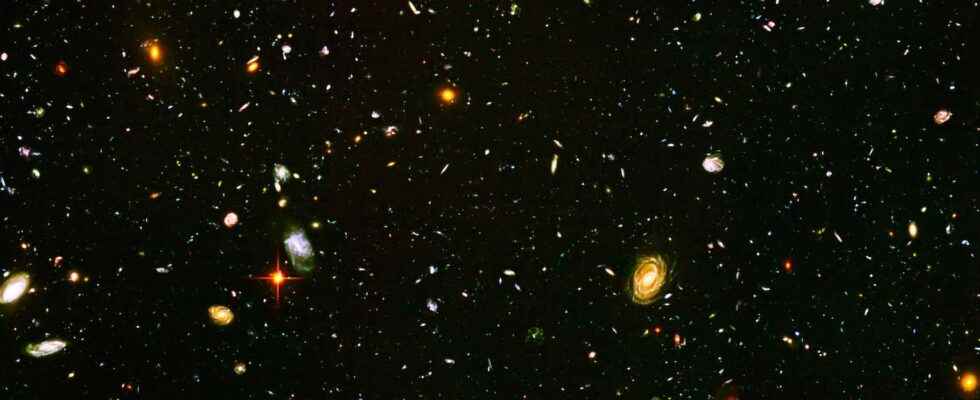Since the discovery of the expansion of the Universe, or almost, the question torments astrophysicists. How fast is this expansion continuing today? Because observations and theory do not give the same answer. Today, the Hubble Space Telescope provides additional precision.
You will also be interested
[EN VIDÉO] Interview: why is the universe expanding? With the discovery of the expansion of the universe came other questions: how fast is this expansion happening? is there acceleration? or slowing down? Futura-Sciences interviewed Aurélien Barrau, astrophysicist specializing in cosmology and author of the book Des univers multiples.
Our Universe is expanding. there is no doubt. What is debating is the speed which continues today this movement. Its current rate of expansion – which is translated by that which the physicists baptized, the Hubble constant. It was in honor of the American Edwin Hubble who discovered the phenomenon of the expansion of the universe and made the first measurements of it in the 1920s. And the tribute is further reinforced today as researchers reveal new new results more precise than ever. Obtained from data collected over more than 30 years by the Hubble Space Telescope.
It should be remembered that measurement was precisely one of the main reasons for the existence of this instrument. Efforts that have been made since the 1970s were aimed at developing a tool capable of solving the cepheids. Because the Cepheids, variable starshave long served as cosmic markers, a kind of standard meter for measure distances in the Universe. Since 1912, exactly. They can be spotted both in our Milky Way only in galaxies distant, thanks to the Hubble Space Telescope, up to about 80 millionlight years.
It was when Hubble was launched in the 1990s that the first series of Cepheid observations were made. With the main objective of refining the measurement of the distances of galaxies close to ours. In the early 2000s, the efforts of astronomers were rewarded. They were thus able to deduce a value from the Hubble constant with an accuracy of 10%. A value of 72 plus or minus 8 kilometers per second per megaparsec (km/s/Mpc).
Which value is correct?
To refine this value, the researchers then added new cameras to the space telescope. With the idea of achieving an accuracy of 1%. An idea led in particular for the collaboration Supernova, H0, for the Equation of State of Dark Energy (SH0ES).
The new results published today by the researchers are thus based on a sample of cosmic markers that has more than doubled. They also incorporate an updated analysis of past data. And in total, 42 supernovae — knowing that Hubble is witnessing a supernova explosion per year, approximately… – also useful for determining distances in the Universe. Astronomers thus estimate, given the size of their sample, at only one chance in a million, the possibility “from an unlucky draw”. And give a value of the Hubble constant of some 73 km/s/Mpc. Very exactly 73.04 +/- 1.04 km/s/Mpc.
The problem is that from the measurements of the Planck mission (European Space Agency, ESA) on our early universe and according to the standard cosmological model, theoreticians predict a value of the Hubble constant which should be 67.5 plus or minus 0.5 km/s/Mpc. So where does this discrepancy come from? Astronomers still don’t know. But it is possible that they must look for the answer somewhere in new laws of physical. A very recent study attempts, for example, to explain the discrepancy using a ” world mirror» invisible particles that would interact with our world only via gravity.
Interested in what you just read?
